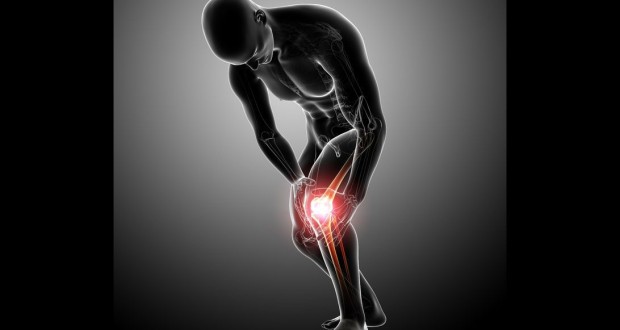If you’ve been dealing with pain in your knees lately, you’re far from alone – a quick search for “knee pain” on Google yields a staggering 28,300,000 results. Aside from this arbitrary evidence, this notion is also supported by research from the Centers for Disease Control and Prevention (CDC). In a 2006 study, the CDC found that 18 percent of adults surveyed had suffered knee pain in the past 30 days.
Knee pain can make life much less enjoyable, preventing you from partaking in physical exercise and leading an active lifestyle. Frustrating as it may be, knee pain can be prevented. By following some practical and easy-to-remember guidelines, you can stop nagging knee pain before it even starts.
Try to Stay Thin – Being overweight puts a lot of extra pressure on your knees, which literally bear the burden of poor dietary choices. Even adding a few excessive pounds puts additional strain on your joints, putting them at greater risk of damage. It is not uncommon for overweight or obese individuals to suffer weight-related injuries to their tendons and ligaments.
Strengthen Your Leg Muscles – While it’s important to not overload your legs with extra pounds, simply staying at a healthy weight is not enough. In fact, one of the most frequent causes of knee injuries is weak and underdeveloped muscles. The muscles that support your knees, including the quadriceps, hamstrings and calf muscles, play an irreplaceable role in your everyday life. Combined, these muscles stabilize knee movements, absorb external shocks and allow you to move around fluidly. Frail knee muscles are often unable to handle this workload, leading to pain and injury.
It’s not especially challenging to keep your knees strong and durable. Gyms feature several exercise machines designed to strengthen knee muscles, including leg extensions, seated leg curls, seated leg presses, adductors and abductors. In addition, you can also perform squats and lunges from the comfort of your own home (while performing these exercises, remember not to bend your knees past a 90 degree angle).
Pick a Quality Pear of Running Shoes – Many of us pay little attention to the shoes we wear everyday. Though you may not realize it, your shoes can help determine the long-term health of your knees. This is especially true for those who enjoy running and jogging. Low quality shoes that offer little support can lead to knee pain, as can old, worn-out shoes that have lost much of their cushioning. One common problem resulting from sub par running shoes is rolled ankles, which can cause pain to develop in the calf muscle and other areas of the knee. As a general rule, it’s best to buy a new pair of running shoes every three months or every 300-500 miles – whichever comes first.
Pay Attention to Your Ankles – Chronic knee pain can also arise due to overpronation, a condition in which the ankle slants noticeably inward after each step. Pronation (the medical term used to describe general inward movement by the ankle) doesn’t always lead to knee pain; if the pronation is minor enough, the patient may not feel any symptoms whatsoever. If the pronation becomes too pronounced, however, the patient may require the aid of shoes designed to correct this conditions. Overpronation can also be treated with shoe inserts known as orthotics.
Avoid Walking on Grass Surfaces – This tip might seem a bit odd, since few people would ever consider grass to be threatening. Despite its innocuous appearance and soft texture, grassy surfaces can be murder on the knees, causing tripping and increased amounts of strain. If you suffer from regular knee pain or have experienced a past knee injury, you are much better off traversing across sidewalks.
 Natural Knowledge 24/7 Educate yourself with nutrition, health and fitness knowledge.
Natural Knowledge 24/7 Educate yourself with nutrition, health and fitness knowledge.






